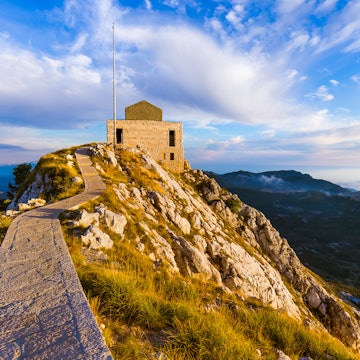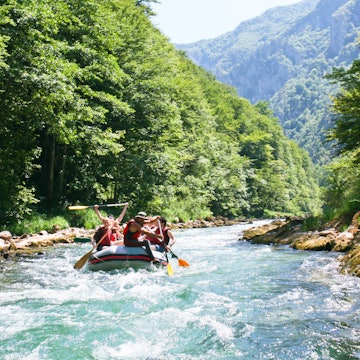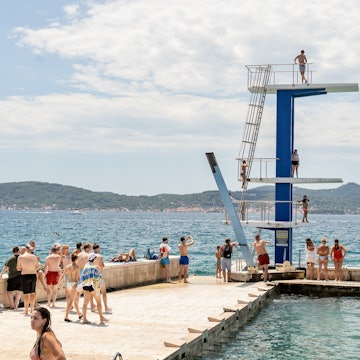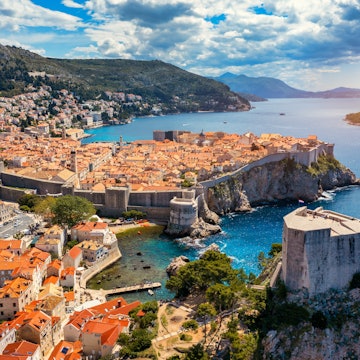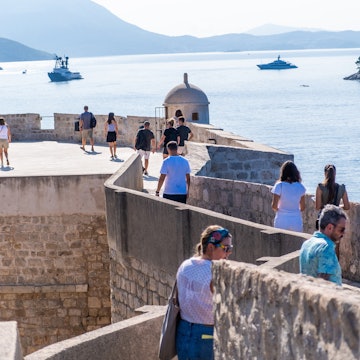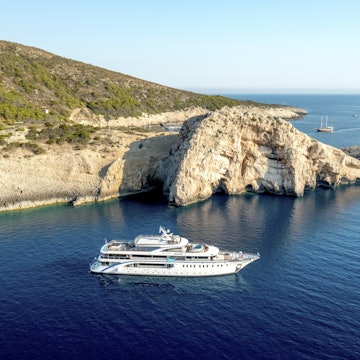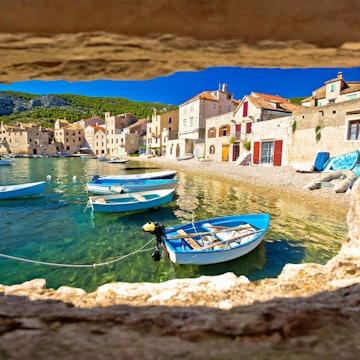

Looking out over the pristine forest of Sutjeska National Park. Jean-Philippe Tournut / Getty Images
From the rushing rapids of the Vrbas River in the north to the epic peaks of Sutjeska National Park in the south, Bosnia and Hercegovina is a giant, natural playground for outdoor activities enthusiasts, wedged between Croatia, Serbia and Montenegro.
This small nation has been discovered by a growing number of adventurous pioneers in search of authentic outdoor experiences. ‘Bosnia and Hercegovina combines the best of old-world Europe with an untouched nature that’s hard to find on the continent outside of the Western Balkans,’ says Thierry Joubert, the director of Green Visions, a Sarajevo-based ecotourism operator which has been running trips for two decades. ‘The high quality of adventure here is something visitors are always surprised by. They also like the fact that they are the first of their friends to really experience this incredible country.’
Hiking trails and mountain peaks
Mountains dominate Bosnia and Hercegovina’s topography. The peaks of the Dinaric Alps, a range that runs through the western half of the Balkan Peninsula, provide the backdrop for much of the country and the context for its personality. Villages perch atop plateaus overlooking gorges. Rivers flow through valleys and cut around massifs. Rural families herd sheep during the summer, when wildflowers carpet the foothills, and gather wood for warmth in the snowy winter.
Trails crisscross the landscape. Travellers can set off on one-day hikes or multi-day adventures linking the country’s summits. Scores of mountain associations, which manage huts (manned and unmanned), welcome trekkers to some of the region’s most famous peaks and massifs. For day hikes and longer excursions, Sarajevo-based Green Visions is a great source for information, advice and group outings.
In recent years, the Via Dinarica mega hiking trail has changed the face of trekking in the Western Balkans. Following ancient trading routes, military tracks and shepherds’ paths, the trail starts in Slovenia and runs through Croatia, Bosnia and Hercegovina, Montenegro, Albania, Serbia, Kosovo and North Macedonia. One stretch connects Sutjeska, Bosnia and Hercegovina’s oldest national park, and Montenegro’s Durmitor National Park just across the border. This epic hike takes mountaineers to both countries’ highest peaks: the 2386m Mt Maglić in Bosnia and Hercegovina, and the 2523m Bobotov Kuk in Montenegro.
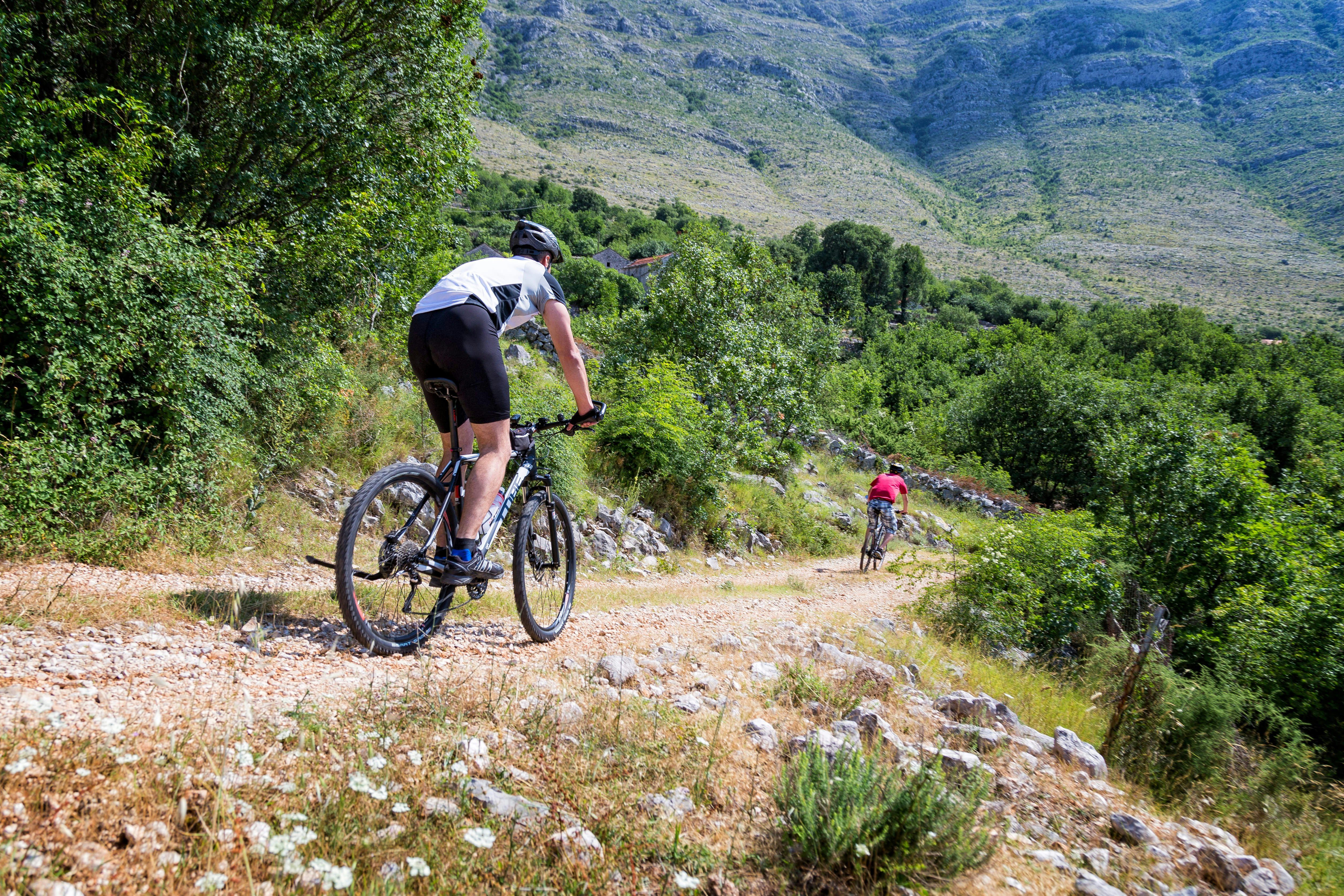
Multi-day cycling and mountain-biking trails
Bosnia and Hercegovina has embraced the bicycle tourism trend, allowing travellers to explore the country’s lesser-visited rural areas under their own steam. Cyclists can roll past farms and fields, fill their water bottles at natural springs, and stay at a growing number of locally owned B&Bs and homestays, which serve their guests farm-fresh vegetables, homemade breads and burek (a savoury flaky pastry filled with meat).
The Ćiro Bike Trail follows the route of a narrow-gauge railway built by the Austro-Hungarian Empire and used from 1901 until the 1970s. Today, the corridor has been upcycled into a 160km-plus cycling route that connects Mostar in Hercegovina with Croatia’s seaside city of Dubrovnik. The path is mostly paved roads with sections of packed gravel. The route follows the Neretva River south from Mostar before cutting east towards the vine-growing region of Popovo Polje and the pretty city of Trebinje.
The country’s most ambitious biking endeavour is the new, cross-border Trans Dinarica mountain-bike trail. The route, designed as a two-wheeled version of the Via Dinarica hiking trail, begins in Slovenia, traverses Croatia and ends in Bosnia and Hercegovina. The focus is on technical single-track riding, but there’s also a mixture of wider dirt and gravel roads. The path in Bosnia is expanding, but at the moment it’s a 10-day journey connecting Mostar to Sarajevo, with overnights in villages, hotels, B&Bs and homestays.

Raft the rapids on four spectacular rivers
Bosnia and Hercegovina’s clean, refreshing and often fast-moving waterways weave in and out of the canyons and gorges that slice through its mountains. Four rivers dominate the country’s rafting scene. The Una River bisects the city of Bihać, in Bosnia’s northwest corner, and rolls through the Una National Park. Una RC Kiro Rafting offers multi-day packages that include a series of falls, beginning from the famous 18m-high Štrbački Buk waterfall. Due east, the Vrbas River winds its way through the city of Banja Luka and has been home to the World (2009) and European Rafting Championship (2009 and 2015), which it will again host in summer 2019. The Kanjon Rafting Centre offers a number of options to negotiate the course, crash through the rapids and enjoy the surrounding landscape through other activities such as canyoning.
To the south, the Neretva River is Hercegovina’s main water thoroughfare. From its source high in the mountains, the river flows through steep canyons, lakes and reservoirs, then past Mostar on its way to the Adriatic Sea. Rafters signing on for a day of adventure with Europe Rafting, based in the riverside town of Konjic, will ride whitewater beneath Prenj Mountain, past converging tributaries and through the unforgettable Neretva Canyon.
The most unforgettable canyon of any journey through Bosnia and Hercegovina, however, cradles the Tara River, which connects the country to Montenegro. The Tara Gorge, as it is often called, is one of the deepest in Europe. This is arguably the region’s most challenging rafting, and adventurers will have their hands full, but should feel secure with the many certified outfitters leading trips through the Unesco-protected area. One such qualified operator is Foča-based Highlander Rafting Kamp, which offers multi-day excursions with overnight stays in riverside bungalows and excellent food.

Take the plunge from Stari Most
For a unique leap of adventure-activity bravery, try diving (or, more accurately, jumping) from Mostar’s famous Stari Most (Old Bridge). From a height of 24m, the green Neretva River flows beneath the bridge with deceptive tranquillity. But, travellers be warned: this is not for the faint of heart, nor is it an activity just anyone can undertake. Candidates must go through training sessions with the local Bridge Divers’ Club.
Originally built in the 16th century by the Ottoman Empire, the bridge was destroyed during the 1990s war. It was rebuilt a decade later and reopened in 2004. In 2005, the bridge and the Old City of Mostar, with its stone and cobbled streets, cafes, shops and restaurants, were added to Unesco’s World Heritage list. Today the town is one of the most popular sites for visitors, and an annual stop on the Red Bull Cliff Diving World Series tour.
To attempt the jump, visit the local Bridge Divers’ Club office on the western entrance to the bridge. For around €35 they will take you downstream for some (much lower) training dives; then if all goes well you can try the real thing, for which you’ll earn a certificate and lifetime membership of the club. But don’t underestimate the dangers – diving badly can prove fatal.

Ski slopes that starred in the 1984 Winter Olympics
Winter sports are also a way of life in Bosnia and Hercegovina. In 1984, the world gathered in Sarajevo, the nation’s capital, for the Winter Olympic Games. The downhill skiing events were divided between two mountains, Bjelašnica and Jahorina, both just south of the city.
Ski Centar Bjelašnica, which hosted the men’s Olympic downhill events, is about 45-minutes drive southwest of Sarajevo. The highest point reaches 2067m. Lifts take skiers to six pistes, the longest measuring more than 3km. In total, there are approximately 10km of groomed trails for every experience level. Daily lift passes cost around €18.
East of Bjelašnica and around 30km southeast of Sarajevo, the Jahorina Olympic Centre has seven lifts servicing 17 slopes. Surrounded by cabins, B&Bs and lodges, it’s perfect for families and offers skiers an array of options, from groomed pistes to tree skiing and deep powder. Day passes cost €25.







